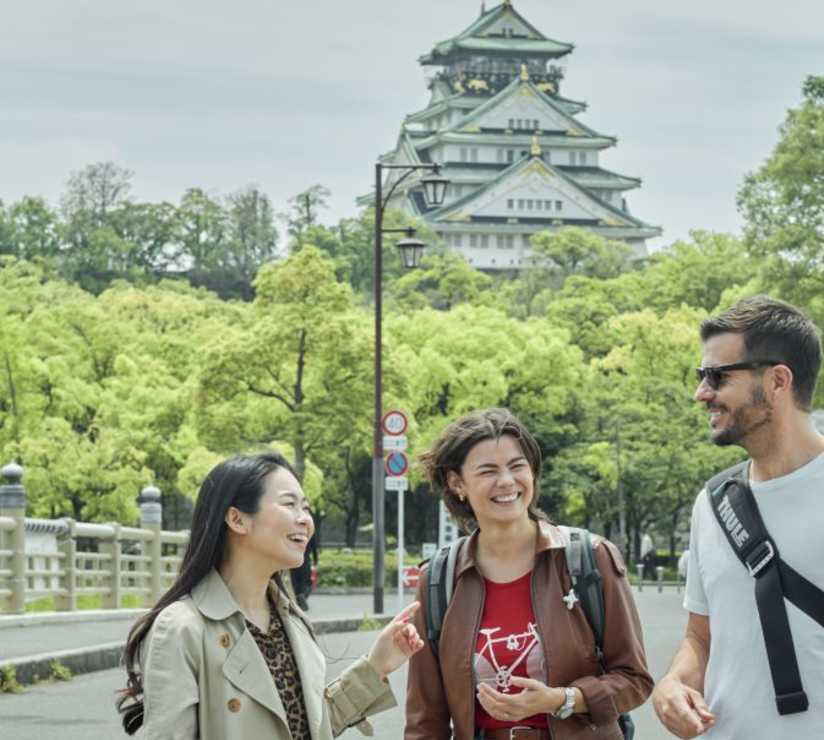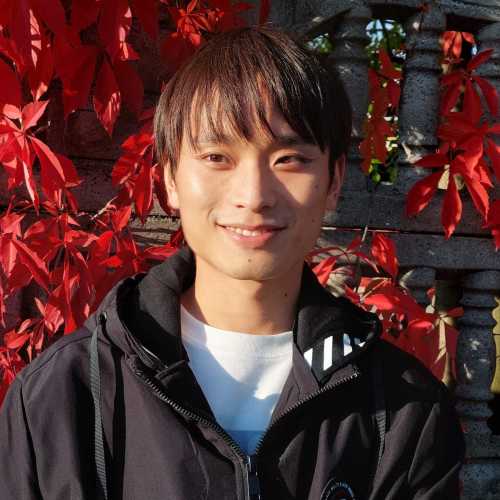Table Of Contents
- What Makes Osaka Different From Tokyo and Japan's Capital City
- The Real Story Behind Osaka Castle
- Why Dotonbori Actually Works Despite the Crowds
- Kuromon Ichiba Market: Beyond Tourist Shopping
- Universal Studios Japan: Theme Park Engineering Meets Japanese Culture
- Osaka Aquarium Kaiyukan: Beyond the Whale Sharks
- Sumiyoshi Taisha: The Shrine Most Guides Ignore
- Shinsaibashi: Where Shopping Becomes Cultural Study
- Tennoji and Shinsekai: Working-Class Neighborhoods Worth Exploring
- Transportation Hubs: Osaka Station and Namba Station
- Umeda Sky Building: Modern Architecture Meets Traditional Views
- Seasonal Experiences: Cherry Blossom Season and Beyond
- Hidden Gems and Alternative Attractions
- Food Culture: From Okonomiyaki to Street Vendors
- Planning Your Trip: Day Trip Options and Longer Stays
- Getting the Most from Osaka's Culture and History

Osaka skyline Image by xegxef from Pixabay
The truth is, Osaka's tourist attractions aren't just backdrops for your Instagram feed. Each one connects to something deeper about how this city works, eats, and breathes. When you visit Osaka, understanding the context behind top attractions makes the difference between surface-level sightseeing and genuine cultural immersion.

Shopkeeper a local market Photo by Beth Macdonald on Unsplash
What Makes Osaka Different From Tokyo and Japan's Capital City
Tokyo gets the spotlight as Japan's capital city, but Osaka operates by different rules. Where Tokyo politely maintains distance, Osaka strikes up conversations. Where Tokyo perfects presentation, Osaka prioritizes delicious food. These aren't tourist board talking points — they're practical differences that change how you should approach exploring here.
The city's merchant history shaped everything from how vendors interact with customers to why food culture runs so deep. This culture distinguishes Osaka from other destinations across Japan, making it essential for travelers seeking authentic Japanese culture beyond the typical Kyoto temples and Tokyo skyscrapers.
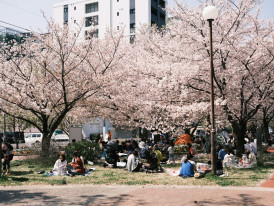
Picnics under Cherry blossoms Photo by Nichika Sakurai on Unsplash
The Real Story Behind Osaka Castle
Everyone photographs Osaka Castle, but most visitors miss the actual story. The current structure is a 1990s reconstruction built with elevators and air conditioning. What you're seeing is essentially a very expensive historical interpretation center that houses an Osaka museum displaying artifacts from Japanese history.
The interesting part isn't the castle building itself but the surrounding parks and how locals use them. Come during cherry blossom season in April and you'll see elaborate picnic setups that make Western barbecues look minimalist. Office workers claim spots at dawn for evening parties, complete with portable generators for karaoke equipment.
Osaka Castle offers one of the best observation deck experiences in the Kansai region. Unlike Tokyo Skytree, this view helps you understand Osaka's geography and how different districts connect across the city. The castle grounds also represent some of the best parks for strolling during any season, though April brings crowds when trees reach full bloom.
Looking for a private city experience in Osaka?
Explore the city with a local who plans a private day just for you; no groups, no scripts.
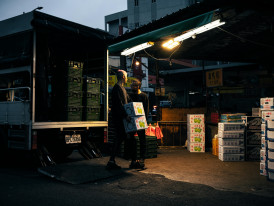
Early morning deliveries. Photo by IAN: https://www.pexels.com/photo/unloading-delivery-truck-at-dusk-16276469/
Why Dotonbori Actually Works Despite the Crowds
Dotonbori gets dismissed as a tourist trap, which isn't entirely wrong but misses why it became famous in the first place. This district has been Osaka's entertainment center for 400 years, and the neon lights aren't random decorations — they're the latest evolution of a tradition that started with kabuki theaters.
The crowds are real and can overwhelm visitors, especially on weekends. But visit on a Tuesday morning or late on a weeknight, and you'll get a different perspective. Early morning is when restaurant owners receive deliveries and prep for the day, offering glimpses of the infrastructure behind the spectacle.
Skip anything with English menus prominently displayed and look for places where locals queue despite having dozens of other options nearby. The takoyaki at Juhachiban has been consistently good for decades, while many newer stalls prioritize speed over authentic flavor.
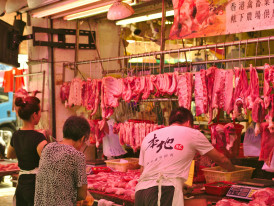
Photo by Chromatograph on Unsplash
Kuromon Ichiba Market: Beyond Tourist Shopping
Kuromon Market transformed from a neighborhood wholesale market into a tourist destination, which changed its character but didn't eliminate its usefulness. The challenge is separating authentic vendors from those exclusively targeting visitors who wander through looking for Instagram opportunities.
Look for stalls where locals shop for ingredients rather than ready-to-eat samples. The best wagyu vendors serve both tourists paying premium prices and neighborhood restaurants buying larger quantities. Both transactions happen at the same counter, demonstrating how authentic culture persists alongside tourism.
The market opens at 9 AM, but the most interesting activity happens between 6 and 8 AM when restaurant owners make daily purchases. If you're jet-lagged anyway, this timing offers better prices, fewer crowds, and more authentic interactions with vendors who spend most of their day serving locals rather than tourists.

Guest on the Super Mario attractions: Photo by Roméo A. on Unsplash
Universal Studios Japan: Theme Park Engineering Meets Japanese Culture
Universal Studios Japan succeeds where other theme parks feel imported because it adapts to Japanese preferences rather than imposing foreign concepts. The seasonal events, food offerings, and crowd management reflect Japanese entertainment culture in ways that make this more than just another day trip destination.
The Wizarding World area represents successful collaboration between American theme park engineering and Japanese attention to detail. Harry Potter attractions here include elements you won't find in other Universal parks, reflecting how Japanese designers approach fantasy environments differently than their American counterparts.
Nintendo World demonstrates what happens when game design philosophy meets physical space construction. The result feels familiar to gamers worldwide while incorporating details that only make sense in Japan, creating modern attractions that reflect contemporary Japanese culture rather than importing American concepts wholesale.
What if your day in Osaka was planned by someone who knows it — and you?
City Unscripted matches you with a local host who creates a private experience based on your interests, not a set route.

Visitors observing the Whale Shark in the Aquarium: Photo by Gavin Li on Unsplash
Osaka Aquarium Kaiyukan: Beyond the Whale Sharks
Osaka Aquarium gets attention for its whale sharks, but the aquarium's design philosophy makes it memorable among Japan's many marine attractions. Instead of organizing exhibits by species or habitat, it recreates the Pacific Rim ecosystem in a spiral layout that mimics diving deeper into the ocean.
The building itself becomes part of the experience. The spiral ramp allows you to view the same exhibits from different depths and angles, changing your perspective on marine environments rather than just displaying sea life for observation. This approach makes Osaka Aquarium more engaging than traditional aquarium designs.
Visit during feeding times, scheduled throughout the day rather than concentrated into single periods. Each species requires different feeding techniques, and watching keepers work demonstrates the complexity behind maintaining these ecosystems. The aquarium's approach to education reflects Japanese attention to process and methodology.
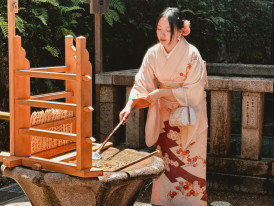
Purification Ritual at Shrine's water basin: Photo by Firdevs Birol
Sumiyoshi Taisha: The Shrine Most Guides Ignore
While everyone rushes to Fushimi Inari in Kyoto for shrine photos, Sumiyoshi Taisha offers a different kind of spiritual experience without Instagram crowds. This shrine predates Buddhism's arrival in Japan and maintains architectural styles you won't see elsewhere, representing hidden gems that most tourists miss completely.
The grounds include multiple shrine buildings, each with different purposes reflecting centuries of Japanese history. Unlike more tourist-focused shrine destinations, this one continues serving its original function as a place where locals pray for safe travels and business success.
Visit during the monthly antique market held on the first Saturday, when vendors spread vintage items across the shrine grounds. The combination of sacred space and commerce reflects how Japanese culture integrates spiritual and practical concerns, offering insight into local culture that extends beyond religious architecture.
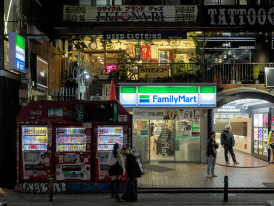
Storefronts at Shinsaibashi: Photo by Julien from Pexels
Shinsaibashi: Where Shopping Becomes Cultural Study
Shinsaibashi-suji is Osaka's main shopping arcade, but approaching it as mere retail misses the point. This covered arcade demonstrates how Japanese cities adapt to weather, create community spaces, and balance preservation with modernization across different districts.
The architecture itself tells stories about post-war reconstruction and economic development. Individual shops retain elements from different decades, creating a timeline of Japanese consumer culture. Some storefronts haven't changed since the 1970s, while others get redesigned annually according to corporate branding guidelines.
Watch how different age groups use the space. Teenagers treat the shopping arcade as a social hub, elderly residents use it for weather-protected daily errands, and tourists navigate with maps while locals move through muscle memory developed over decades. This social function makes shopping arcades more than commercial spaces.
Tip
We match you with the right host, not just any guide.Want to experience the real Osaka with someone who lives there?
A fully private experience, planned and led by a local host who tailors the day to you

Patrons enjoying at a traditional restaurant.
Tennoji and Shinsekai: Working-Class Neighborhoods Worth Exploring
Tennoji and adjacent Shinsekai represent Osaka's working-class history, but they're often misrepresented as either dangerous areas to avoid or nostalgic time capsels to romanticize. The reality is more complex and reveals aspects of Japanese culture rarely visible in tourist-focused districts.
Tsutenkaku Tower functions as this district's iconic tower, but unlike modern observation deck experiences, it represents old-fashioned entertainment architecture from Japan's rapid industrialization period. The surrounding streets contain some of Osaka's best examples of working-class culture that predates the city's transformation into a major tourism destination.
Kushikatsu originated in these neighborhoods, and while you'll find it throughout Osaka now, the original restaurants maintain different standards and traditions. The "no double-dipping" rule isn't just hygiene — it's a social contract reflecting how communal dining experiences work in Japanese culture.
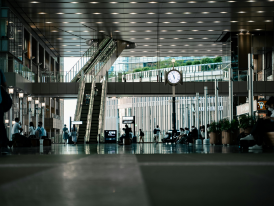
Crowds moving through Osaka Station Photo by Satoshi Hirayama Pexels
Transportation Hubs: Osaka Station and Namba Station
Osaka Station and Namba Station aren't just practical infrastructure — they're integrated into daily life in ways that affect how neighborhoods develop and how people interact with the city. These train stations represent some of Japan's most sophisticated approaches to urban planning and commercial integration.
Osaka Station serves as the primary connection point for travelers arriving from Kansai International Airport via express trains, but it's also a destination in itself. The station complex includes department stores, restaurants, and entertainment venues that turn transportation time into shopping and dining opportunities.
Namba Station connects to multiple train lines and subway routes, making it essential for accessing different districts across the city. The surrounding area combines traditional shopping streets with modern commercial developments, creating a microcosm of how Osaka balances historical preservation with contemporary needs. Both Namba Station and Osaka Station demonstrate how Japanese urban design integrates multiple functions into single locations.

Umeda Sky Building at Sunset: Photo by Willian Justen de Vasconcellos Pexels
Umeda Sky Building: Modern Architecture Meets Traditional Views
Umeda Sky Building represents Osaka's approach to modern attractions — combining innovative architecture with practical urban planning. The building's distinctive design features two towers connected by a floating observatory, creating one of the most unique observation deck experiences in Japan.
The building serves multiple purposes beyond tourism. Lower floors house offices and restaurants, while the observation deck provides 360-degree views of Osaka and the broader Kansai region. On clear days, you can see Kyoto, Nara, and Kobe, making it an excellent orientation point for understanding regional geography.
Unlike some modern attractions that feel disconnected from local culture, Umeda Sky Building integrates into neighborhood life. The basement level features a recreation of early 20th-century Japanese streets, complete with traditional restaurants and shops, bridging the gap between historical preservation and contemporary architecture.
Ready to plan your perfect day in Osaka?
Start your experience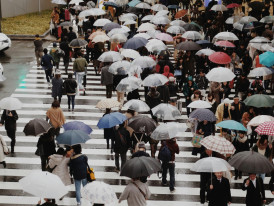
Rainy Streets in Osaka: Photo by Keke Cheng: Pexels
Seasonal Experiences: Cherry Blossom Season and Beyond
Osaka's appeal changes dramatically with seasons, affecting everything from crowd levels to which attractions provide the best experiences. Cherry blossom season brings peak tourism, but understanding seasonal patterns helps you plan more realistic itineraries regardless of when you visit.
April represents peak season for many parks, but the two weeks after cherry blossoms reach full bloom offer better weather and fewer crowds while maintaining some flower viewing opportunities. The city's numerous parks each offer different perspectives on seasonal changes, from formal gardens to neighborhood spaces where locals gather.
Summer brings festival season and extended nightlife hours. While July heat can be intense, it also transforms how people use public spaces and creates different rhythms for exploring the city. Air-conditioned shopping areas become social hubs, and the contrast between indoor and outdoor environments becomes part of the experience.
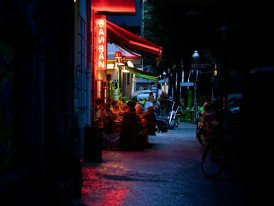
A narrow alley in Ura Namba with small bars and restaurants, their warm light spilling onto the street where a few locals chat outside. Photo by Rapha Wilde on Unsplash
Hidden Gems and Alternative Attractions
Between major attractions, Osaka contains numerous hidden gems that provide insight into daily life while offering respites from tourist crowds. These alternative experiences often reveal more about local culture than famous landmarks.
Ura Namba represents one of these hidden gems — narrow alleys behind the main Namba shopping district filled with tiny bars, intimate restaurants, and local gathering places. Unlike the broader streets designed for tourist traffic, Ura Namba maintains the scale and atmosphere of traditional Japanese entertainment districts.
Rooftop gardens atop department stores and office buildings offer unexpected green spaces without admission fees or crowds. Many remain unmarked and unknown to visitors despite being accessible to the public, representing the kind of discoveries that make return trips rewarding.
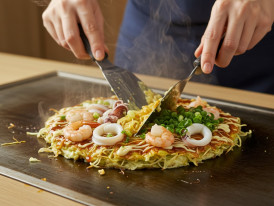
Close-up of hands mixing okonomiyaki batter with cabbage, seafood, and green onions on a table grill, showing the DIY nature of the dish
Food Culture: From Okonomiyaki to Street Vendors
Osaka's food reputation extends beyond having good restaurants. The city developed distinct culinary traditions based on merchant pragmatism and working-class accessibility that distinguish it from Tokyo's formal dining culture or Kyoto's refined kaiseki traditions.
Okonomiyaki exemplifies this philosophy. Unlike dishes with precise recipes and presentation standards, these savory pancakes encourage customization and personal preferences. Restaurants provide infrastructure — grills, basic ingredients, condiments — while diners make choices about combinations and cooking techniques.
Street food culture prioritizes flavor and value over presentation. Vendors succeed by perfecting specific techniques rather than expanding menus, and the best takoyaki stands focus on texture and timing rather than novelty ingredients. This approach reflects broader cultural values that prioritize substance over appearance.

A tired but happy tourist sitting on a bench in Dotonbori at sunset, guidebook and map beside them, with the busy district continuing its evening activities in the background.
Planning Your Trip: Day Trip Options and Longer Stays
Common questions about trip planning — "Is two days enough?" or "What makes a good day trip?" — depend on what you're trying to accomplish. Osaka works well as either a destination in itself or as a base for exploring the broader Kansai region including Kyoto, Nara, and Kobe.
A focused day trip from Kyoto can cover major attractions, but understanding the city requires longer engagement. Realistic itineraries should prioritize experiences over coverage — spending half a day understanding one district deeply provides more insight than rushing through multiple areas for photo opportunities.
Multi-day stays allow you to experience seasonal changes, different times of day, and return visits to favorite locations. The city rewards this kind of patient exploration because many of the best experiences happen through accumulated familiarity rather than first impressions.
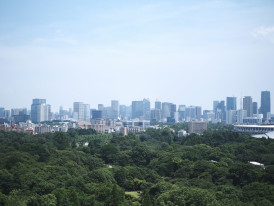
A panoramic view of Osaka from a high vantage point showing the mix of historical sites, modern buildings, and residential areas that make up the complete city landscape Photo by moreau tokyo on Unsplash
Getting the Most from Osaka's Culture and History
Beyond individual attractions, Osaka offers insight into Japanese history and culture that differs from more famous destinations. The city's merchant traditions, working-class authenticity, and food obsessions create a distinct regional identity within Japan's broader cultural landscape.
Understanding this context makes visits more meaningful. When you see how locals use parks, how neighborhoods organize around train stations, or how food culture influences social interactions, individual attractions become part of larger patterns rather than isolated experiences.
The key is balancing planned attractions with unstructured time for observation and discovery. Real insights often happen between destinations — conversations with shopkeepers, discoveries in side streets, or simply watching how public spaces function during different parts of the day.
Consider Osaka experiences that connect multiple sites through themes like architectural development, food culture, or seasonal celebrations. For structured exploration, osaka tours can provide historical context, though independent wandering often yields more authentic discoveries about this fascinating city.
What if your day in Osaka was planned by someone who knows it — and you?
City Unscripted matches you with a local host who creates a private experience based on your interests, not a set route.
Want to experience the real Osaka with someone who lives there?
A fully private experience, planned and led by a local host who tailors the day to you
